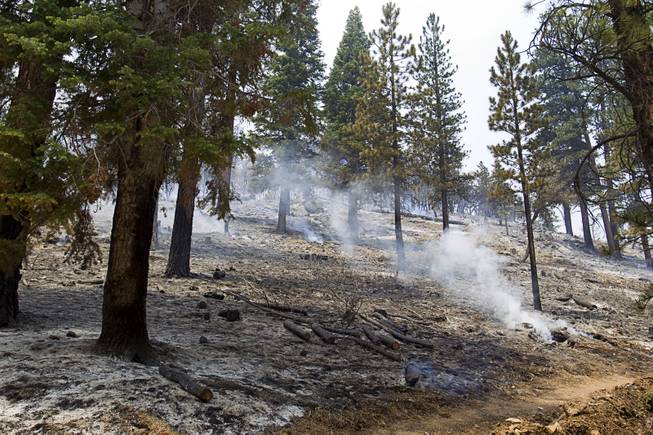
Smoke rises from hot spots after a burn out (purposely setting fire inside a control line to consume fuel) on a slope in the Rainbow subdivision on Mount Charleston Tuesday, July 9, 2013.
Friday, July 12, 2013 | 2 a.m.
Sun coverage
Monday, July 1
The morning dawns hot and clear and the high temperature at McCarran International Airport will reach 114 degrees. A small wave of moisture flows into the region off the Pacific. It prompts discussion inside the National Weather Service office on Dean Martin Drive near Blue Diamond Road, where the daily fire weather report is being prepared.
Forecasters warn firefighting agencies of isolated, gusty thunderstorms with little, if any, rainfall. By mid-morning, cumulonimbus clouds, encouraged by the upslopes of the Spring Mountains, form their signature thunderheads. Inside the top of these dense clouds, moisture turns to ice chunks that chaotically collide with one another, creating electrical charges. Lightning is discharged within the clouds and between clouds. A lightning bolt, stretching longer than a mile, strikes the ground 5 miles southwest of the Mount Charleston Lodge, on a mountainside peppered with pinyon and junipers.
• • •
The interagency wildland fire dispatch center, located at the North Las Vegas Airport, receives the first inkling of a problem at 1:12 p.m. It’s a call from U.S. Forest Service Engine 454 that, with the weather service’s earlier warning, had been sent out to patrol for lightning-triggered fires.
The four-person crew, on State Route 160 near Pahrump, sees smoke rising from near Carpenter Canyon on the west side of the Spring Mountains. The fire's name sticks — in the official logs this becomes the Carpenter 1 Fire — even though it’s closer to other prominent canyons. Fire officials say the fire is too inaccessible to send a ground crew.
• • •
Rodney Giles bought a cabin and moved in 1974 to Rainbow Canyon, a mile or so below the Mount Charleston Lodge off Kyle Canyon Road. He has seen three fires come and go. This evening, he hears from a neighbor there’s a small lightning-sparked fire on the side of the mountain facing Pahrump. He shrugs it off.
Tuesday, July 2
Giles drives down the mountain to pick up some paint at Wal-Mart and two weeks’ worth of groceries at Food 4 Less. Returning home in the evening, he sees fire cresting a ridgeline between Mount Charleston and Cathedral Rock. A downdraft, he thinks to himself, could send flames onto his side of the mountain.
Later, he is going to wish he had stopped at the Paiute Indian reservation down below and picked up a carton of cigarettes.
• • •
Marty Adell is flying somewhere over southern Utah, observing smokejumpers parachute out of a Twin Otter plane, ready to battle wildfires below, when he gets a flurry of messages on his cellphone. A wildfire near Mount Charleston that started with a lightning strike has gobbled up more than 1,000 acres, upgrading itself to a more serious Type II fire.
When the Twin Otter lands that evening in Ely, Adell grabs his gear — clothing, safety manuals and a backpack filled with survival and firefighting necessities — and drives to Southern Nevada, where he will assume responsibility for managing the Carpenter 1 Fire.
He hasn’t been home, in Boise, Idaho, for almost a month.
Wednesday, July 3
Daily updates are now being issued by the fire information office. It says the fire has grown to 1,800 acres and that 120 firefighters are on the scene.
At some point — but it is unclear when — dispatchers request a helicopter that dumps 50 gallons of water at a time. Today it is on the scene.
Follow-up requests will be made for two single-engine, retardant-dropping aircraft from Cedar City, Utah. Next, fire bosses will ask for and get larger aircraft and a command plane to fly over the scene on Mount Charleston, to orchestrate the attack from high above.
A call previously was put out for a specially trained and exceptionally fit crew of firefighters — Hotshots — each carrying 50 pounds of water, food and equipment, including shovels and chainsaws. The first to answer the call is a crew headquartered in the Northern California town of Mill Creek.
• • •
A Metro Police motorcycle officer wheels into Rainbow Canyon and starts going door to door, encouraging residents to pack up and leave. Giles will have nothing of it. He avoids the knock on his door. “I’ll take care of myself,” he says. “I’m going to keep my property wet.”
• • •
At 7 p.m., Adell is being briefed at a U.S. Forest Service office in Las Vegas. By the time he arrives in Pahrump, it’s dark outside, except for fire visible on the mountain.
Thursday, July 4
On this holiday, Adell’s first order of business is a 6 a.m. briefing with the initial team, made up mostly of local firefighters. It becomes clear, based on the extreme terrain and scorching temperatures, it’s time to call for reinforcements.
He places an order with the dispatch center for more engines, more firefighters and more Hotshot crews.
• • •
Some 500 miles to the north, Brett Olson’s phone rings while he’s celebrating Fourth of July at his sister’s house in Boise, where the National Interagency Fire Center is headquartered. There’s a wildfire raging in Southern Nevada needing help from Red Truck Wildfire, a private firefighting company he joined this year.
The 27-year-old former website developer tries to leave his family with assurance, even though he has no idea what to expect. This is his first wildland firefighting mission.
“Don’t worry,” Olson tells his family. “I’ll be safe.”
• • •
Nancy and Merle Barber are, like their neighbor Giles, also resisting instructions to evacuate their house in the Rainbow subdivision. It's a home that Nancy Barber spent a year decorating and includes an upstairs loft to gaze upon the pines. Tonight she is spellbound for hours by orange flames. She is shivering with fright.
• • •
Real estate agent Ken Matonovich and a neighbor are grilling chicken and steak when he spots tall flames appearing on a ridgeline. That explains the traffic driving down the mountain. He curses, then joins the parade, not needing an official evacuation notice. He retreats to his Summerlin residence.
He takes little with him. “It’s just stuff,” he later says, matter-of-factly. “Stuff can be replaced.”
Friday, July 5
Rich Harvey wakes up with housework on his mind. It’s his day off in Carson City, and he wants to spread wood chips under the playset he built for his 4-year-old son. Maybe Harvey will drop some stuff off at the dump, too.
But his phone rings at 9 a.m., signaling an end to those thoughts. The fire ravaging the Spring Mountains has become increasingly complex, enough to warrant a Type I rating and trigger a response from the most experienced of wildland firefighters. Like packing for a vacation, he throws clean clothes in a bag, grabs his computer, sleeping bag, tent, boots and hat and piles into his truck.
This will be far from a vacation, though. He will be the incident commander for the Type I team assembling on Mount Charleston.
• • •
The fire grows to 2,000 acres, and 300 firefighters are on the lines, working furiously to cut firebreaks through the trees and heavy brush. The National Weather Service warns of 40 mph wind gusts.
• • •
Mandatory evacuation notices are issued on the mountain and the Barbers decide to leave before it’s too late. They suddenly are rushing around the house, grabbing photographs and family treasures that go back two generations.
Nancy Barber knows she can’t take the fish tank and sounds almost apologetic in her love of the fish. “Fish are pets,” she says. Cars filled, they head for their other home, down in the valley. Firetrucks are growling up the mountain, and the Barbers want to leave before fire hoses are crossing the road.
• • •
Giles is driving around, taking stock, and stops at the volunteer fire station near the top of Kyle Canyon Road. A Metro Police officer pulls up and tells Giles it’s time to pack up and leave, period. Giles says he won’t go.
Saturday, July 6
With a small army descending on the fire camp and command center that has taken over Centennial High, logistics rises to the forefront of concerns. How do you feed, bathe and shelter more than 1,000 workers?
The answer: A contracted caterer, some portable showers and plenty of sleeping bags and mats.
And that’s how Kirk Jensen, a manager for Port-A-Pit Catering, enters this bubble of organized chaos. He receives his call Saturday night in Merced, Calif., where his catering crew waits for calls.
The catering crew stationed in Las Vegas already had been dispatched to another western wildfire. At the moment, Jensen’s team is the closest available option. They mobilize within two hours and begin driving southeast.
• • •
The night sky above Mount Charleston glows orange, and no wonder. The fire has grown to more than 11,000 acres and is burning out of control. Still, this will end up being a good day, thanks in part to cloud cover.
Olson, on his inaugural fire call, is standing near a fire engine, flames shooting 100 feet and higher into the air just a quarter-mile away. This job, he says, is scary. And exhilarating.
For the rest of the night and into the next morning, Olson serves as a lookout for spot fires and tracks weather conditions. Afterward, he will fall asleep on a mat rolled at the fire camp at Centennial High. His refuge: a classroom where students learn French.
Sunday, July 7
Giles’ three-story mountain home is surrounded by 27 ponderosa pines and Douglas firs, some standing more than 60 feet tall. Today Giles is standing on top of his house, hose in hand, watering down the roof, the sides of the house and the home's expansive deck. This is his post for the next eight hours. From his vantage point, he sees firefighters moving about through the smoke. He doesn’t see any flames.
• • •
What Giles can’t see is that firefighters are creating a fireline around the subdivision, clearing the ground of brush, pine needles and twigs that could fuel the fire’s spread. And in several hours, the two will meet — firefighters versus wildfire — at that line. Taking advantage of favorable winds, firefighters set a controlled burn from the line, backing into the encroaching wildfire.
It works. The Rainbow subdivision homes remain unscathed, and Harvey, the guy in charge, breathes a sigh of relief.
Monday, July 8
Patrick Jacobson is on vacation from his job with the Clark County School District, teaching grade school children — and other teachers — how to use technology, software applications and specifically iPads. This morning a friend emails him: The U.S. Forest Service is looking for people with good vehicles to help run errands.
He drives to Centennial High and signs up. Here’s the deal, he’s told. You’re going to be a volunteer, but you’ll get paid 48 cents a mile and $370 a day for the use of your ¾-ton Dodge Ram diesel pickup. Jacobson signs up and gets training, including how to deploy the emergency fire blanket in case he’s caught by flames.
By the end of the day, Jacobson, working an 8 a.m.-to-midnight shift, has hauled computers to Pahrump and taken a firefighter with a twisted ankle to the airport to fly home. The firefighter tells Jacobson this is one of the worst fires he’s ever worked.
• • •
Giles has spent another eight hours on his roof, watering down his house. By evening he sees flames climbing up trees across the street, approaching a neighbor’s backyard. He begins wondering if he made the right decision to stay. The air is filled with hot ashes and he is scared.
Tuesday, July 9
All is quiet in the courtyard of Centennial High. It’s just after 6 a.m., and the firefighters are paying respects to their comrades, the 19 Hotshots killed June 30 fighting a wildfire in Arizona. It’s a reminder of danger and sacrifice.
• • •
In the morning, Jacobson drives his truck to the helipad office at North Las Vegas Airport, delivering office supplies, water, Gatorade, paper towels and toilet paper. Later he is dispatched to a truck parts store in North Las Vegas to pick up six gallons of motor oil (fire trucks always seems to need more oil) and an electronic throttle sensor for a Hotshots transport vehicle — they’re called buggies — that has broken down up on the mountain. He’s met on the mountain by a government mechanic who came down from Wells to help on the fire.
• • •
Wind activity has picked up by mid-afternoon, with gusts reaching 30 mph from the southwest, spelling trouble for the eastern edge of the wildfire. The fire crosses State Route 157 at mile marker 6, a lower-elevation area filled with desert brush, and runs strong to the north and east.
Forecasts predict pesky winds, so firefighters scramble to drop fire retardant around Harris Springs and Prospect Ranch in the morning. The fire spares Harris Springs but barrels through Prospect Ranch, despite the preventive measures.
On-scene crews report at least one structure lost.
Damn it, Harvey thinks.
The 5:30 p.m. public meeting at Centennial High is a little more than an hour away. Harvey is frustrated and sad.
He delivers the news to the hundreds of anxious residents in his frank, no-nonsense style: “It wasn’t the best day.”
Firefighters protected homes in Rainbow but lost ground in other places, including a structure in Prospect Canyon, he tells the crowd. Containment dropped from 15 percent to 10 percent, and the wildfire grew to 25,000 acres.
“I just hope the sun goes away and the wind dies down,” he says. “That would be two good things for the firefighters.”
Harvey gets more bad news that night. The text message from a fellow commander comes in at 9:43 p.m. and starts, “There has been an injury.”
He would find out later that it was a twisted ankle, sending a young firefighter on injury leave for five days. Harvey breathes another sigh of relief.
• • •
After sunset, the fire, which has grown to about 40 square miles, claims its biggest structure. Flames on the eastern edge engulf a rustic, family-owned lodge and some other buildings on the Prospect Springs Ranch, a get-away distinguished by its animal trophies, fireplaces and nearby paddleboats for the small lake, framed by junipers and pinyon pine.
It’s the kind of place, owner Barry Becker says, where you can get away for a weekend and smoke a cigar.
“It used to be so very green,” Becker says. “It might be black now.”
Wednesday, July 10
Kevin Olmstead, who is assigned to the fire camp’s food team and does everything from ordering meals to checking food temperatures, knocks on the door of Port-A-Pit Catering’s office — an air-conditioned RV stationed on the west side of Centennial High. It’s shortly after 11 a.m. and time is of the essence.
He’s placing an order for 430 hot meals to be ready by 6 p.m., to be taken to firefighters up on the mountain.
Firefighters need 6,000 calories a day. And by this morning, Port-A-Pit’s fourth day feeding the team, the firefighters have devoured 6,000 pounds of dinner protein, 240 gallons of milk, 900 dozen eggs and 2,000 loaves of bread.
Inside the school, phone calls — including one from U.S. Rep. Steven Horsford’s office seeking an update — besiege staff in a classroom-turned-information center.
But the public isn’t the only entity hungry for information. Newspaper clippings pinned to a wooden board near the food tent keep firefighters abreast of current events and, yes, sports scores. Two headlines posted today: “Police, firefighters hailed in Asiana crash” and “More hurricanes on the horizon.”
• • •
Back on the mountain, a firefighter from San Diego stops by Giles’ home and offers him a couple of cigarettes. Ultra light 100s, so Giles is happy.
Not far away, firefighters report that embers are being blown up to 1½ miles ahead of the front, and flames are reaching 250 feet high.
• • •
This morning, Jacobson has shuttled a couple of firefighters from the base camp to Pahrump but his day becomes more interesting in the evening when he’s sent to the helipad in North Las Vegas. A Hotshot has hurt his ankle while fighting the blaze on the western front and is being flown by helicopter for medical attention at the base camp.
After the firefighter is treated, Jacobson drives him and another Hotshot back to Trout Canyon, taking a washboard road several miles up the hill. The pair start talking about the previous night, when they were sleeping close to a ridgeline and were suddenly awakened at 4:30 a.m. by flames that seem to shoot out of nowhere, forcing them to quickly evacuate to a safer location.
• • •
A meeting among a wide spectrum of officials begins inside a high school lecture hall at 4 p.m. The room is a who’s who of public service, filled with representatives from various agencies such as Metro Police, Red Cross, Nevada Department of Transportation, Las Vegas Valley Water District, U.S. Forest Service, City of Las Vegas Emergency Management and on and on.
“It’s not our meeting,” Deputy Incident Commander Paul Broyles tells the crowd. “It’s not a team meeting. It’s your meeting.”
This is the place where forces can unite or share concerns, and community service providers can learn the latest information.
Operations Section Chief Brad Washa delivers some uplifting news: Firefighters have a good handle on the fire that crossed State Route 157 and have added firelines at more points along the wildfire perimeter.
A lively patch of fire, however, is moving toward Red Rock Canyon National Conservation Area.
• • •
At the nightly public meeting, Harvey shares the Thursday weather report: a high chance of rain in the mountains.
“The rain will buy us a couple or three days, but it won’t kill it,” he says.
“It” is the elusive fire, which would spread to nearly 28,000 acres by Thursday morning.
Thursday, July 11
The weather forecasts prove true come morning. A light rain falls on firefighters gathered in the high school courtyard for the 6 a.m. briefing.
They sip Starbucks coffee as Jason Clap, a National Weather Service meteorologist who is dispatched here for tightly focused forecasting, predicts 90 percent cloud coverage and 40 to 50 percent humidity. At least part of Harvey’s earlier wish is coming true: less sun.
But rain can pose other problems, Harvey carefully reminds the firefighters. In 1974, flash flood runoff raged through Nelson’s Landing on Lake Mohave and killed at least nine people.
“Hard to say this to a bunch of firefighters, but watch out for water,” he says.
• • •
By day’s end, Rodney Giles, the resident who refused to leave the mountain, is counting his blessings, and not just because another firefighter brought him a pack of cigarettes. He might see a firetruck every half hour or so, heading off in one direction or another, but none are stationed at the top of Kyle Canyon; they’re on other fronts.
Rain woke him three times overnight, and today it rains two or three more times. “Everything is wet,” he reports. “I’ve got wet decks, a wet house, wet trees. That’s nice.”
He thinks the worst is over for the residents along Kyle Canyon. “Fires are still burning elsewhere, but from the (Mount Charleston) lodge down to Harris Springs, fire would have to cross charcoal to get back to us,” he says this evening.
“We’ve made it through so many fires, they can’t take this place away from us now.”
• • •
More than 1,000 firefighters will return to the firelines on Friday, the blaze 43 percent contained and dampened by today's rain, but not yet extinguished.
Staff reporter Alison Saclolo contributed to this report.
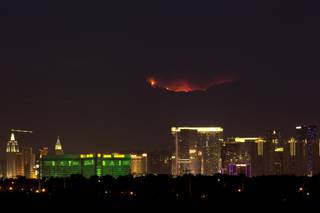

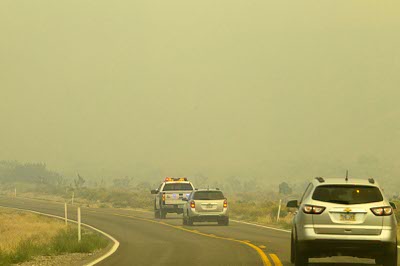
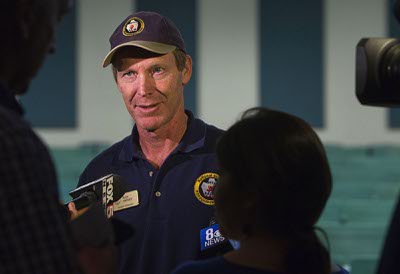
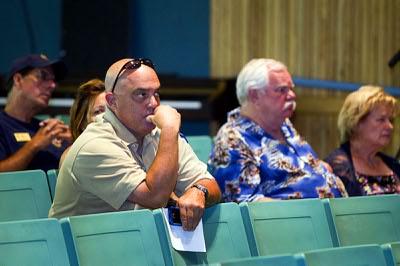
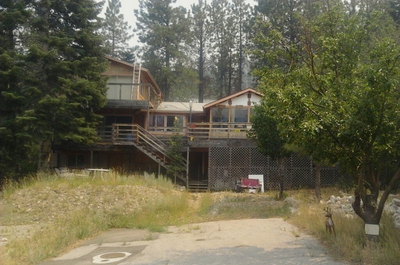
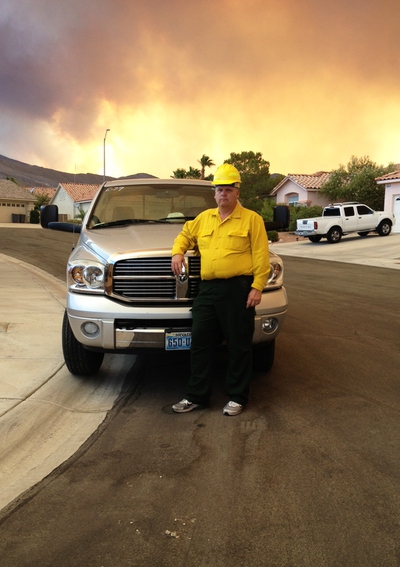

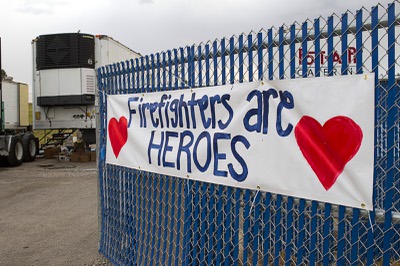
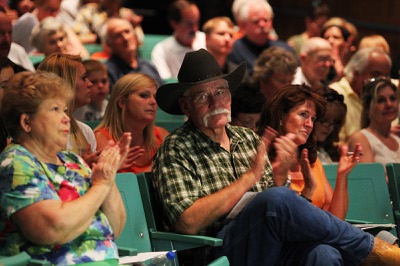

Join the Discussion:
Check this out for a full explanation of our conversion to the LiveFyre commenting system and instructions on how to sign up for an account.
Full comments policy